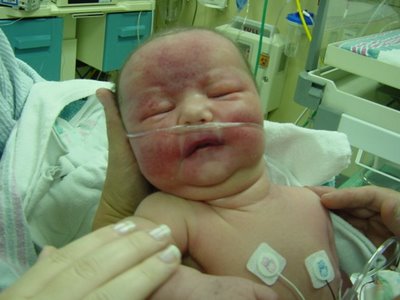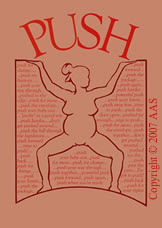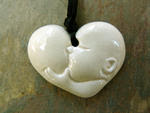
From Homebirthdebate.blogspot.com:
Meribeth:
"And yet still you haven't even touched the subject of the fetal and maternal deaths that happen as a direct result of hospital error or misdiagnosis. And what about the neonatal deaths that are a result of trauma due to forced deliveries or drug reactions."
Blogger Dr:
"If you want to know why, do some research to find out what the actual numbers are for maternal and neonatal deaths caused by interventions. I suspect that you will be surprised to find that the real numbers are extremely small, certainly smaller than the excess risk of neonatal death at homebirth."
Safe Baby Partner:
First of all, there is NO SCIENTIFIC RESEARCH to indicate that the human baby is NOT adversely affected by drugs, medical technology, interventions, and surgical birth. The burden of proof is on the medical establishment to prove that what they are doing is safe in the moment and for the lifelong physiological system of the human being.
Secondly, the refusal or inability of obstetrics and lack of research from the obstetric and medical field does NOT mean that there is no danger or long term effects of interventions. It is not in their interest to study the effects of an intervention before using it, and certainly not afterward. For example, forceps were never studied before using, and never IN the field of obstetrics do they study the long term effects. Nor, has main stream psychology looked at the use of drugs and interventions at birth as a contributor to life long mental, emotionl, or personality issues.
Was the vacuum extraction device created with the long term effects in mind (no pun intended)? It is known to severely distort the baby's scull and therefore brain. NO research has clearly looked at the long term impact to the human. Off-label drugs like scopalamine, demerol, and cytotec were used without any research to show they were safe as are the current drugs for mental illness and depression used prenatally. NOW, researchers are comparing groups of babies who had different narcotics during labor. NOW they are comparing groups of babies whose mother's took prozac prenatally with those who did not. and concluding no significant differences and"no major malfunctions." However, no studies show safety before using, nor is there a long time follow-up to show us there are no SYSTEMIC and LONG TERM effects of the drugs on the brain and liver of the baby. In every field of medicine and drug research there IS every reason to suspect very serious consequences for drug use during labor and birth.
Unfortunately, the documentation of deaths because of drug use and interventions is very hush-hush, as is the trauma to a baby who survives -- as in the photo above. Physically and emotionally, the effects of birth trauma is said to just magically "go away" when the outward evidence (ie., bruises) does - even when there are dire warnings to physicians. Some how our perceptions of just how "resilient" baby's and children are doesn't apply to us as adults. We would not believe that a trauma to cause such bruising was nothing to talk or fuss about. When a child falls and hits his head so hard it can be heard in another room, well meaning adults shhhhush the child and say, "you are ok, you're ok, shhusssh." As a adult we would be crying, swearing, and/or making sounds and jumping around. Imagine if your head was so abused that it created a malformation of your head that looked like a chignon bun -- a common occurrence with vacuum extraction. Why do educated, nice, compassionate people believe that the baby's brain is UNAFFECTED by this AS a baby is birth drug-impaired?? The birthing brain is "resilient" to the point of being unaffected by what would bring an adult to their knees? How is it that psychological research does not look at this? And, it's known to doctors.
Below is an example of a warning to physicians
FDA Public Health Advisory: Need for CAUTION When Using Vacuum Assisted Delivery Devices (You are encouraged to copy and distribute this advisory.)
May 21, 1998 --- EIGHT YEARS AGO!!!
To:
Obstetricians, Birthing Centers, Nurse Mid-Wives,Pediatricians, Ultrasonographers, ObGyn Nurses, Family Practitioners, Radiologists, Hospital Risk Managers, Hospital ObGyn Departments. (DIRECT ENTRY and LAY MIDWIVES and DOULAS and PRE and PERINATAL THERAPISTS HAVE KNOWN THIS A LONG TIME!!)
PURPOSE
This is to advise you that vacuum assisted delivery devices may cause serious or fatal complications, and to provide guidance to minimize the risk. While no instrumented delivery is risk free, we are concerned that some health care professionals who use vacuum assisted delivery devices, or those who care for these infants following delivery, may not be aware that the device may produce life-threatening complications (see attached list for sample of references). We are also concerned that if health care professionals responsible for the care of neonates are not alerted when a vacuum assisted delivery device has been used on a particular infant, they may not adequately monitor for the signs and symptoms of device-related injuries.
Article continues at: http://www.fda.gov/cdrh/fetal598.html
The following sites are of researchers and practitioners who have been studying the lifelong traumatic effects of interventions at birth. A live baby does not mean uninjured baby.
Association for Pre and Perinatal Psychology and Health is the United States version of an international organization of multi-disciplinary fields of study looking at the period of preconception through early infancy. www.BirthPsychology.com. APPPAH was cofounded by David Chamberlain, PhD. www.bepe.info and Thomas Verney, MD at www.trvernymd.com
Other leaders in the field are:
William Emerson, PhD at www.emersonbirthrx.com
Wendy McCarty, RN, PhD at www.wondrousbeginnings.com
Raymond Castellino, DC at www.castellinotraining.com
and www.beba.org org
featured on the documentary narrated by Noah Wiley
www.whatbabieswant.com
Gerald Vind, PhD (neurobiology) www.pnri.net
Frederick Wirth, PhD. (neonatologist) at www.prenatalparenting.com
Basic science researchers whose work supports the primal period as critical are:
Peter Nathanielsz, PhD. MD
Michel Odent, MD at www.wombecology.com
Candace Pert, PhD at www.candacepert.com
Bruce Lipton, PhD at www.brucelipton.com
All of these sites were posted on the homebirthdebate blog and removed.
The burden must be on obstetric medicine and psychology to show us that what they do IS SAFE.








No comments:
Post a Comment